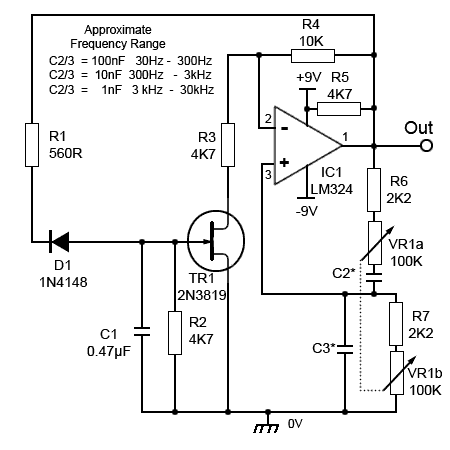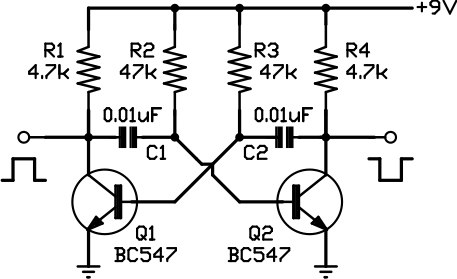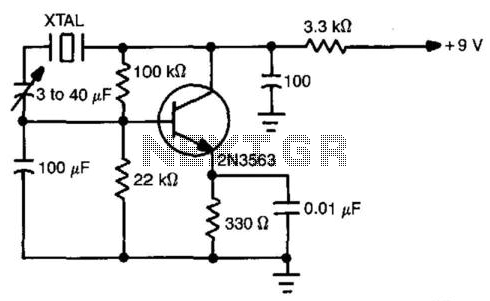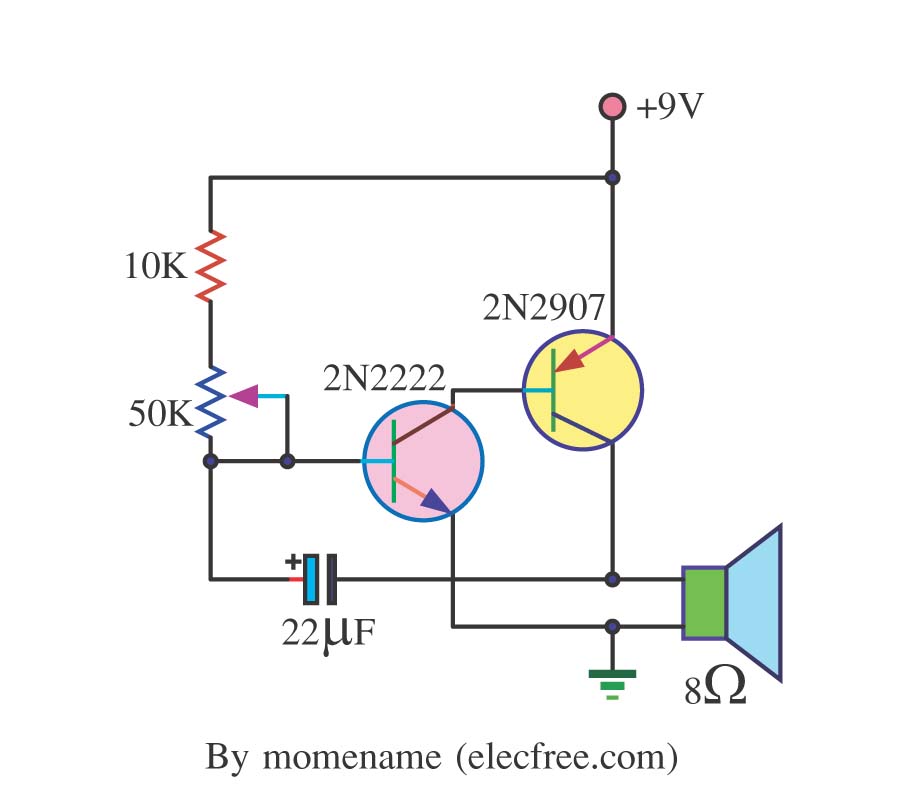
PIERCE CRYSTAL OSCILLATOR
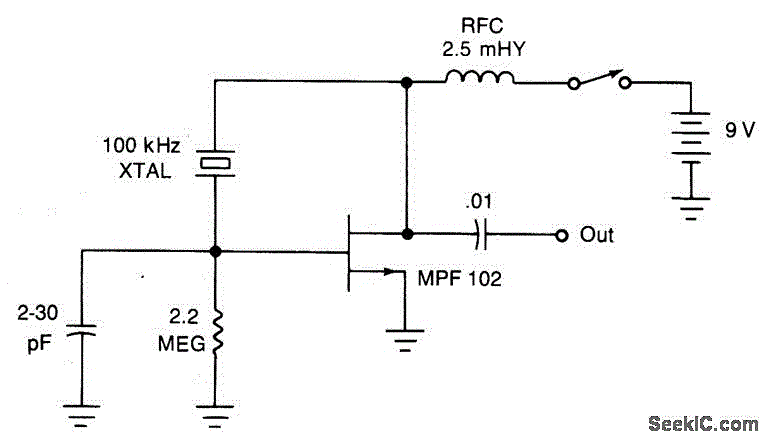
The JFET Pierce oscillator is stable and simple. It can serve as the clock for a microprocessor, a digital timepiece, or a calculator. With a probe at the output, it can be utilized as a precise injection oscillator for troubleshooting. By attaching a small length of wire at the output, this circuit can function as a micropower transmitter.
The JFET Pierce oscillator is a versatile circuit that leverages the properties of a Junction Field Effect Transistor (JFET) to generate a stable oscillation signal. The core of the circuit typically consists of a JFET configured in a common-source arrangement, which is coupled with a feedback network that includes passive components such as resistors and capacitors. This configuration allows the circuit to achieve a high degree of frequency stability, making it suitable for applications requiring precise timing signals.
In microprocessor applications, the JFET Pierce oscillator can provide a reliable clock signal essential for synchronizing the internal operations of the chip. This clock signal is critical for ensuring that all components of the microprocessor operate in harmony, thus enabling efficient processing and data management.
For digital timepieces and calculators, the oscillator's simplicity and stability make it an ideal choice. It can produce a frequency that corresponds to the required timekeeping precision, ensuring accurate time display and calculation functions.
The capability to use the JFET Pierce oscillator as an injection oscillator is particularly valuable for troubleshooting purposes. By connecting a probe to the output, technicians can inject the oscillator's frequency into a circuit under test. This allows for the identification of faults or performance issues within the system, facilitating efficient diagnostics.
Furthermore, when a small length of wire is attached to the output, the oscillator can be transformed into a micropower transmitter. This configuration enables the transmission of low-power signals over short distances, which can be useful in various applications, including remote sensing and wireless communication systems. The simplicity of the design allows for easy integration into compact devices, making it a popular choice among electronics engineers for low-power transmission tasks.
Overall, the JFET Pierce oscillator stands out for its stability, ease of use, and adaptability, making it a fundamental component in modern electronic applications.The JFET Pierce oscillator is stable and simple. It can be the clock of a microprocessor, a digital timepiece or a calculator. With a probe at the output, it can be used as a precise injection oscillator for troubleshooting. Attach a small length of wire at the output and this circuit becomes a micropower transmitter.. 🔗 External reference
The JFET Pierce oscillator is a versatile circuit that leverages the properties of a Junction Field Effect Transistor (JFET) to generate a stable oscillation signal. The core of the circuit typically consists of a JFET configured in a common-source arrangement, which is coupled with a feedback network that includes passive components such as resistors and capacitors. This configuration allows the circuit to achieve a high degree of frequency stability, making it suitable for applications requiring precise timing signals.
In microprocessor applications, the JFET Pierce oscillator can provide a reliable clock signal essential for synchronizing the internal operations of the chip. This clock signal is critical for ensuring that all components of the microprocessor operate in harmony, thus enabling efficient processing and data management.
For digital timepieces and calculators, the oscillator's simplicity and stability make it an ideal choice. It can produce a frequency that corresponds to the required timekeeping precision, ensuring accurate time display and calculation functions.
The capability to use the JFET Pierce oscillator as an injection oscillator is particularly valuable for troubleshooting purposes. By connecting a probe to the output, technicians can inject the oscillator's frequency into a circuit under test. This allows for the identification of faults or performance issues within the system, facilitating efficient diagnostics.
Furthermore, when a small length of wire is attached to the output, the oscillator can be transformed into a micropower transmitter. This configuration enables the transmission of low-power signals over short distances, which can be useful in various applications, including remote sensing and wireless communication systems. The simplicity of the design allows for easy integration into compact devices, making it a popular choice among electronics engineers for low-power transmission tasks.
Overall, the JFET Pierce oscillator stands out for its stability, ease of use, and adaptability, making it a fundamental component in modern electronic applications.The JFET Pierce oscillator is stable and simple. It can be the clock of a microprocessor, a digital timepiece or a calculator. With a probe at the output, it can be used as a precise injection oscillator for troubleshooting. Attach a small length of wire at the output and this circuit becomes a micropower transmitter.. 🔗 External reference
